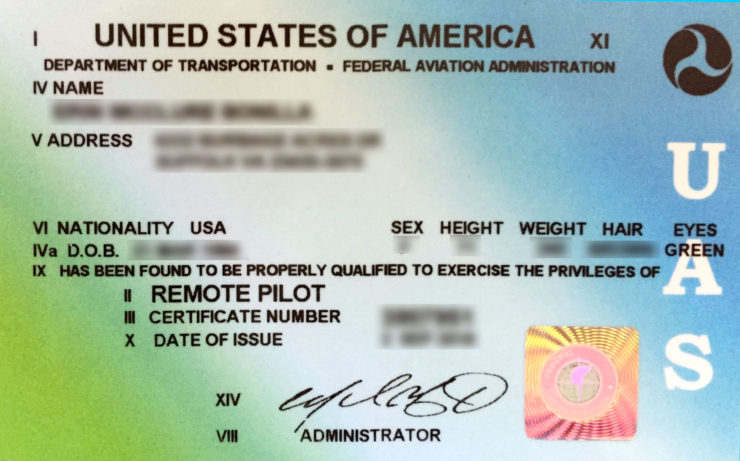Due to the spike of the number of drones flying in U.S. airspace, the Federal Aviation Administration (FAA) has stepped in to set rules and regulations to maintain the safety of the American skies. In 2016, the FAA enacted the Small UAS Rule Part 107, which outlines Drone laws and guidelines for both commercial and recreational use of drones in the United States.
In years past, only very wealthy individuals and large corporations could afford to own and use drones. Now, drones have become more affordable, making it commonplace for hobbyists, small business, and regular people to own and operate them. If you plan to join this club, and own or operate a drone that is yours, it is important to know the ins and outs of the legalities and laws that surround the use of drones, both recreationally and professionally.
Drone Registration

Registration of any new drone is mandatory, regardless of purpose of use. If the drone weighs more than 0.55 lbs. or less than 55 lbs. Any drone weighing more than 55 lbs, it must be registered. will need to go through the Aircraft Registry process. This should be your first step after purchasing your drone, and before taking to the air.
The cost of registering your drone is only $5, in comparison to the potential penalty of $27,500 if you are found flying an unregistered drone. The only exception to this rule is aircraft, that weigh less than 0.55 lbs. However, small, low-altitude type drones like the Parrot Bebop must be registered.
Online registration is an option for consumers that purchase small drones, but, if you own an unmanned aircraft you will have to fill out a lengthier form. Once registration is completed, you will be given a unique identification number, valid for 3 years. If you have a fleet of drones the same registration number can be used for each drone you own.
When and Where You Can Fly Your Drone
The FAA has placed limitations on when and where you are able to fly your drone.
Where You Can Fly Your Drone:
The FAA has placed a height limit of 400 feet on drone flight, and drones must yield the right of way to manned aircraft. Additionally, your drone must remain within your visual line of sight at all times when in flight.
Drones are not permitted within 5 miles of airports unless air traffic control is informed and has given permission to occupy the airspace. Similarly, drones cannot be flown over people or near stadiums. If you are found to be recklessly flying your drone, a fine can be levied against you for jeopardizing the safety of people and other aircraft around you.
When You Can Fly Your Drone:
Drones can legally be flown during official daylight hours, which limits you to the hours between sunrise and sunset, as it pertains to local time.
- Is there a speed limit when I fly my drone?
Yes, maximum airspeed, as allowed by the FAA, is 100 mph. - Do I need to have a Remote Pilot Certificate (RPC) to fly my drone?
Yes and no. If you are flying your drone for recreational purposes, you don’t need to obtain a RPC to legally operate your drone. To legally operate a commercial drone, you must obtain a RPC.
The requirements for obtaining a RPC are simple:
- 16 years of age minimum
- Must pass a knowledge skills test
- Must be vetted by the Transportation Security Administration (TSA)
Your certificate will be valid for a period of 2 years. As a certified unmanned aircraft operator you will need to keep all records and documents of small UAS inspections and testing. Additionally, any accident with your drone needs to be reported to the FAA within 10 days.
All unmanned aircraft flown by a licensed drone pilot must be registered and undergo preflight checks before flight.
- I’ve been hired to fly my drone commercially to capture aerial video of a concert, but this violates FAA regulations. What do I do?
Any flight plan that does not adhere to the FAA rules (Part 107) will need a Section 333 waiver. You will need to provide a safety plan to the FAA and detail the flight plan. Once approved, you will be able to complete the work. Section 333 is only available for commercially operated drones.
Final Thought
While flying drones is great fun, it is important to know and observe all the rules and regulations surrounding legal operations of drones in U.S. airspace. This will help you avoid conflict or trouble with those around you.
|